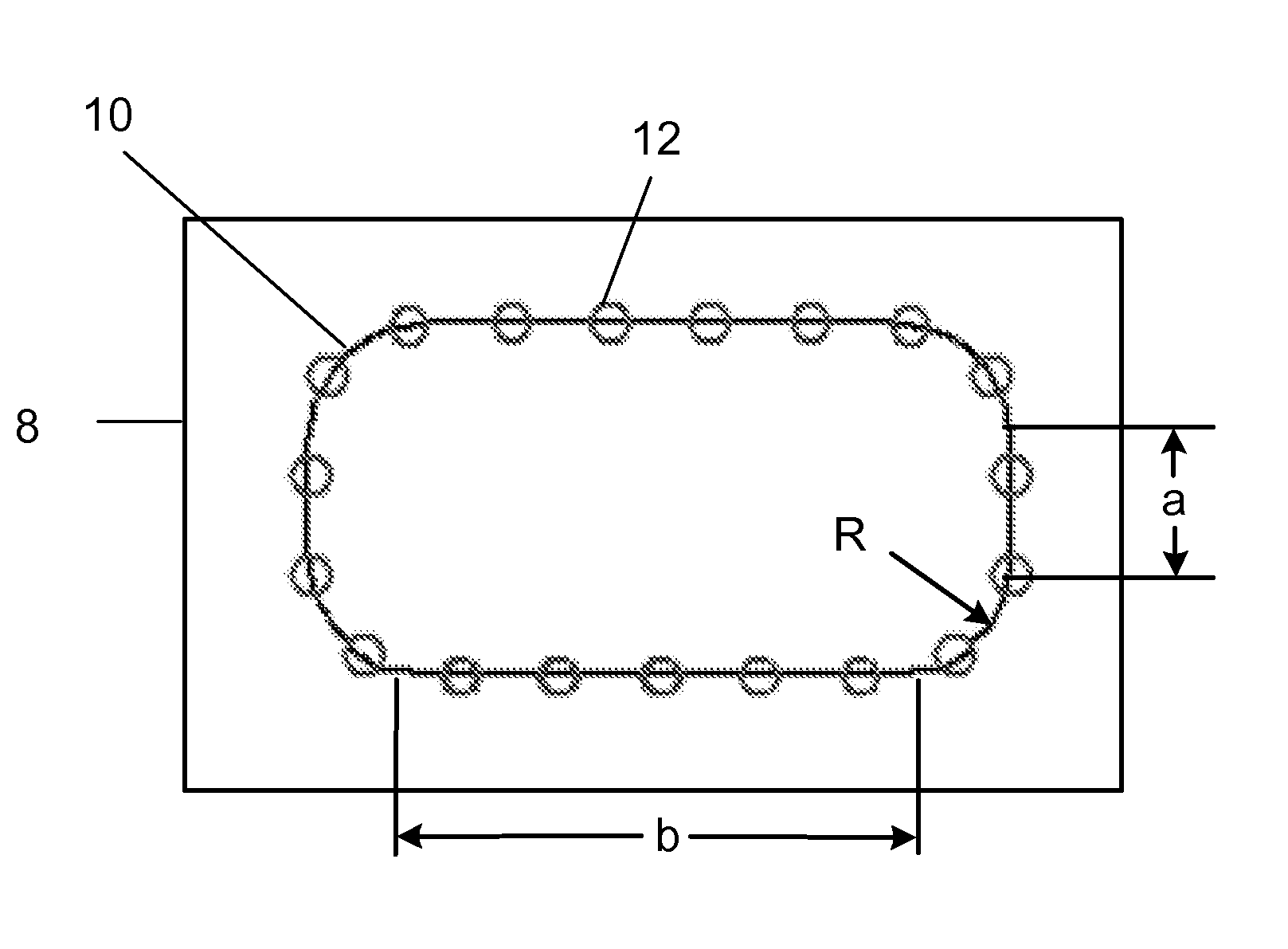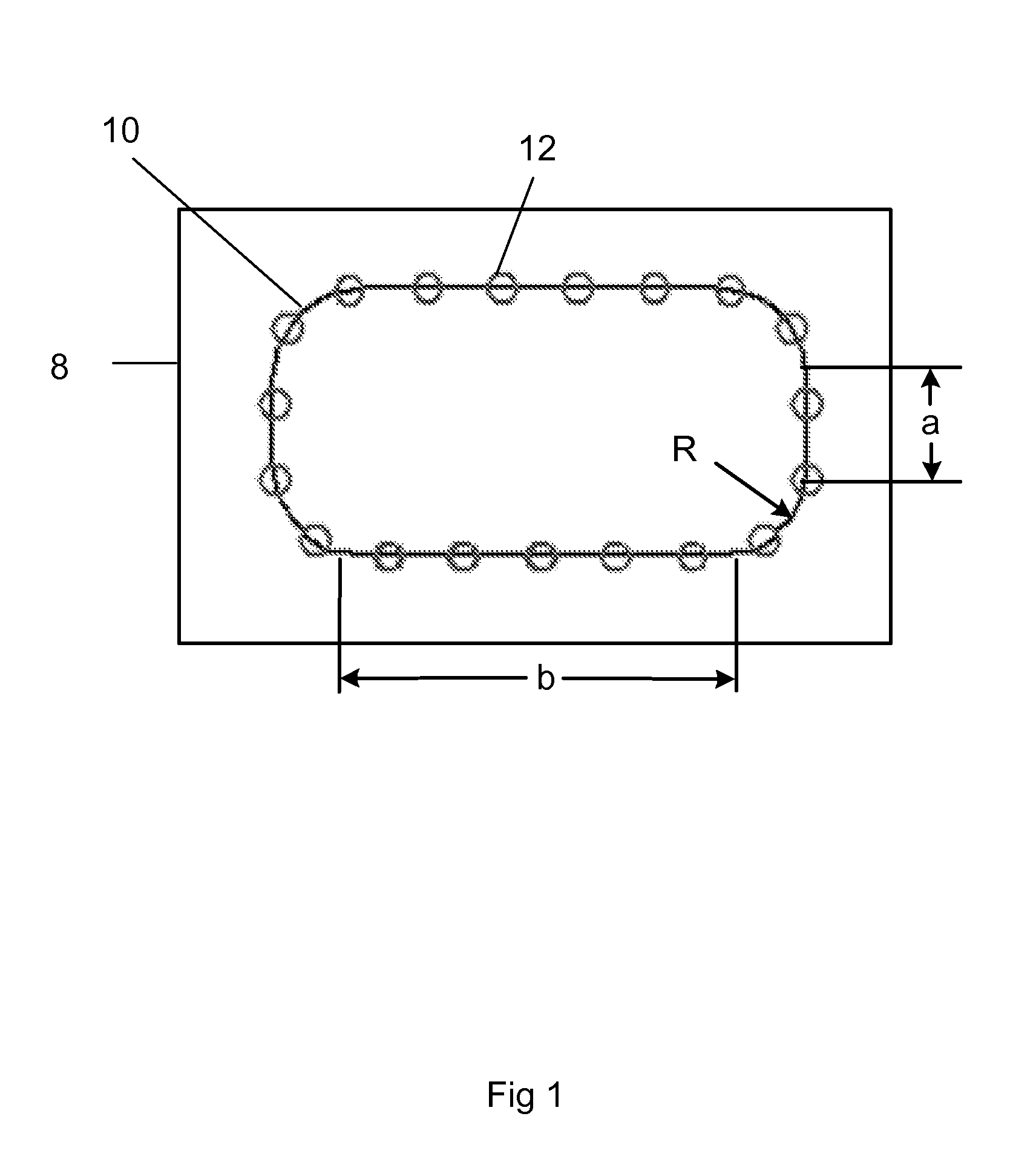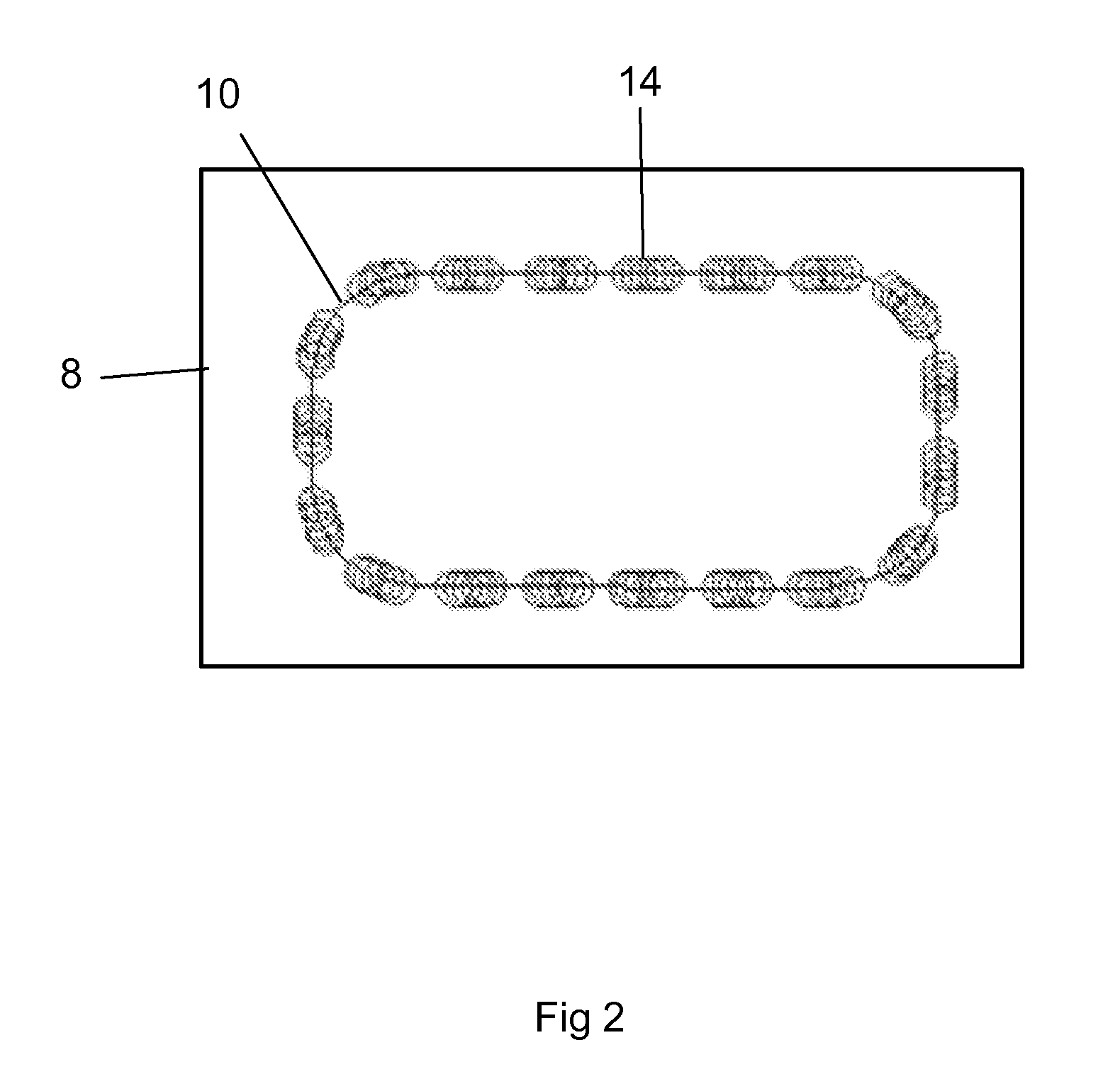Method and apparatus for brittle materials processing
a technology of brittle materials and laser processing, which is applied in the direction of lasers, manufacturing tools, welding/soldering/cutting articles, etc., can solve the problems of difficult to precisely separate parts, difficult to apply cited approaches, and difficult to precisely apply them, so as to avoid chipping and cracking, the effect of avoiding excessive heat buildup in the region
- Summary
- Abstract
- Description
- Claims
- Application Information
AI Technical Summary
Benefits of technology
Problems solved by technology
Method used
Image
Examples
Embodiment Construction
[0016]An embodiment of this invention is an improved method for laser machining a feature in brittle material with a laser processing system. This laser processing system has a tool path, or a series of locations on a workpiece that indicate where a laser pulses are to be directed in order to machine the associated feature. An exemplary laser processing system which may be adapted to embody this invention is the MM5800 manufactured by Electro Scientific Industries, Inc., Portland, Oreg. 97229. This system uses two lasers, one or both of which may be a diode-pumped solid state Q-switched Nd:YAG, or Nd:YVO4 laser operating at wavelengths from about 1064 microns down to about 255 microns at pulse repetition frequencies of between 30 and 70 KHz and having average power of greater than about 5.7 W at 30 KHz pulse repetition rate. A diagram of a laser processing system adapted to embody this invention is shown in FIG. 7, where a laser processing system 40 has a laser 42 emitting laser pul...
PUM
| Property | Measurement | Unit |
|---|---|---|
| scan speed | aaaaa | aaaaa |
| scan speed | aaaaa | aaaaa |
| size | aaaaa | aaaaa |
Abstract
Description
Claims
Application Information
 Login to View More
Login to View More - R&D
- Intellectual Property
- Life Sciences
- Materials
- Tech Scout
- Unparalleled Data Quality
- Higher Quality Content
- 60% Fewer Hallucinations
Browse by: Latest US Patents, China's latest patents, Technical Efficacy Thesaurus, Application Domain, Technology Topic, Popular Technical Reports.
© 2025 PatSnap. All rights reserved.Legal|Privacy policy|Modern Slavery Act Transparency Statement|Sitemap|About US| Contact US: help@patsnap.com



